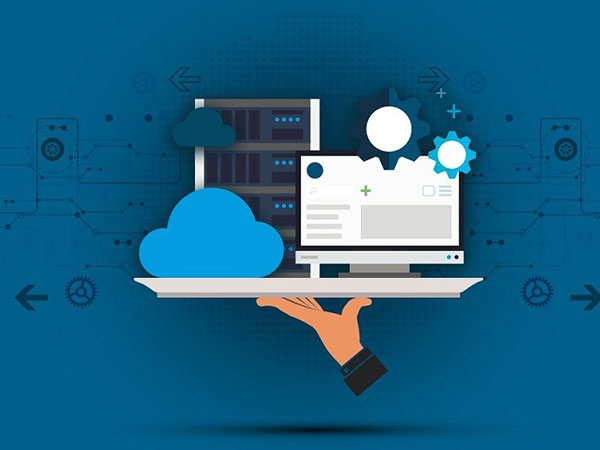Big data is an incredibly useful platform for any business, big or small. It allows brands to delve deeper into the information and insights that fuel their products, services and processes.
For example, you can use data collected on past product performance to make a more informed decision about a future launch or development cycle.
That said, big data as a whole isn’t exactly what you’d call accessible. For starters, you need to deploy the systems and processes to collect useful data.
Then, you need to have a team of data analysts and scientists to sort through it all and find the actionable intel.
Finally, you need someone to take that practical data and put it to good use. A company executive just might not have a clear plan for, or understand the applications of, a niche data set.
This doesn’t mean applying big data is impossible. It just means it’s a potentially involved and time-consuming process.
Naturally, this can give organizations and decision makers enough doubt to avoid big data systems. The number of companies using predictive analytics to drive processes and make decisions, for instance, remains low at 29 percent, according to a 2016 PwC press release.
Adoption for these technologies and systems is rising, but not at the rate it could be.
So if you’re reluctant to get involved with big data, you’re not alone. Luckily, there are tools and resources to help you manage the transition.
7 data-powered business tools
1. Marketing ROI: Kissmetrics
Big data isn’t just about the data itself. This means that even if you collect customer or visitor data and use it to your advantage, you’re not necessarily using big data fully.
In today’s highly digital landscape, collecting and analyzing data is par for the course. Tracking the number of visitors or traffic referred to your website isn’t necessarily “big data.” An alarming 61 percent of employees say their company is not using big data solutions despite collecting data regularly.
This all relates to marketing, because you’re constantly reviewing data to inform your decisions and actions. The performance of a new product launch will tell you whether or not the resources that went into it were worthwhile.
If it fails to catch on, you know not to waste more resources on similar products or services. But again, this is just surface information — not true insights.
Kissmetrics is a data-powered tool that can help you boost your marketing ROI and processes. It does more than just track information like pageviews, heatmaps, demographics and more.
It actually churns that data and spits out usable intel. You can use the platform to create triggers that resonate with your audience and further boost customer engagement and behaviors.
2. Sales Calling: PhoneBurner
Big data has become a key player in the evolution of modern sales and marketing departments. Few examples illustrate this point better than the ways in which big data has been incorporated into modern sales calling software.
PhoneBurner is a power dialing company that automates the sales calling process so that, when a potential customer answers the phone, they are connected to a live sales agent (with no annoying pause in between).
If the call goes to voicemail, the power dialers leaves your pre-recorded voicemail and integrates the call status directly into a software dashboard so you can easily follow up via email at a later date.
3. Third-Party Integration: InsightSquared
One key obstacle in big data is fragmentation. There are so many tools, platforms, third-party portals and information streams that combining and parsing everything can be incredibly daunting.
InsightSquared is a data-driven tool that solves this with solid integration with third-party platforms and services. It can connect to popular enterprise solutions you’re likely already familiar with, such as Google Analytics, ZenDesk, QuickBooks, Salesforce and more.
The information is then mined and analyzed, making it more accessible to you, your teams and even parties who don’t work with data regularly. If you connect a customer relationship tool or CRM, it syncs up the data to offer efficient lead generation, customer tracking, pipeline forecasting and even profitability predictions.
4. Machine Learning and Predictive Analytics: IBM’s Watson Analytics
Big data solutions can offer some pretty amazing insights into your business, customers and strategies. Machine learning and predictive analytics are the way to achieve this.
IBM’s Watson Analytics relies on the IBM Watson machine learning API to deliver remarkable analysis of your data. More importantly, it automates the entire process intelligently to leave you more time to focus elsewhere.
The best feature of Watson is that it unifies all data analysis projects into a single channel or source. It can be connected to marketing and sales tools, finance and human resources, customer data and performance and much more.
Watson also employs a unique AI system to deliver “natural language” insights, which is a fancy way of saying the data it returns is easy to understand.
5. Credit and Payment Analytics: TranzLogic
Love it or hate it, credit card transactions and related payment systems can deliver boatloads of invaluable and necessary data. Even so, associated data streams are not always accessible — especially to smaller businesses or teams — and they can be super complex and confusing.
TranzLogic is designed to process this information and extract actionable intel. Want to measure sales performance and customer patterns or improve promotions? What about using payment data to improve loyalty programs and boost engagement across your customer base?
Also, it’s a turnkey tool that doesn’t require additional knowledge or experience. Even if your specialty lies beyond IT or data, you can still make sense of everything reported through TranzLogic.
6. Customer Feedback: Qualtrics
Research can be invaluable to any business or brand. In fact, by conducting studies, surveys and simple questionnaires, you can extract highly useful insights about your audience and products. Why do you think polls and surveys are so popular on social media networks? People love to share their opinions. This is even a great way to discover and hear about new ideas or concepts.
Qualtrics is a customer feedback solution for related big data sources. With the tool, you gain access to three different types of real-time insights: market, customer and employee trends.
This includes things like customer satisfaction, exit interviews and market research. You can even unlock academic research and mobile studies, too. There’s a lot of data here you could put to use.
7. Long-Term Data: Google Analytics
Google Analytics probably needs no introduction. What’s special about Google’s toolset is that it can help you extract long-term information and stats. For instance, you get to see where traffic is coming from and how that fluctuates over time.
With information like this, you can fill in any gaps. You could, for instance, use this to your advantage during the holidays to target common referrals through marketing and promotions.
Social media traffic is another great source of data, which is also tied into Google’s platform.
It’s more of a robust, multi-platform toolset that can be used to track the kind of information you’d want to track anyway.
More importantly, it’s instantly accessible through your browser.

















![7 data-driven ways to optimize your online store for mobile [Infographic]](https://crayondata.ai/wp-content/uploads/2019/11/optimize-1.jpg)


![Top tips and tricks to improving your customer experience [Infographic]](https://crayondata.ai/wp-content/uploads/2019/01/customer-journey-1.jpg)